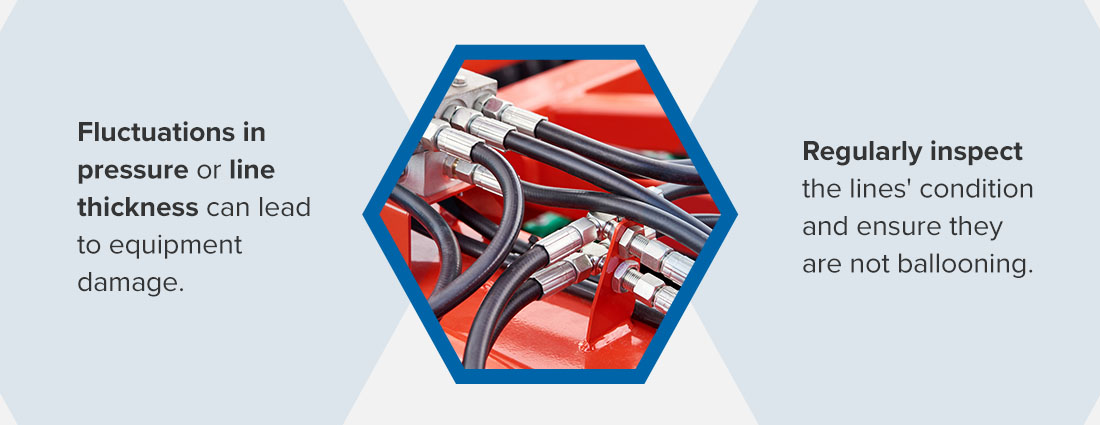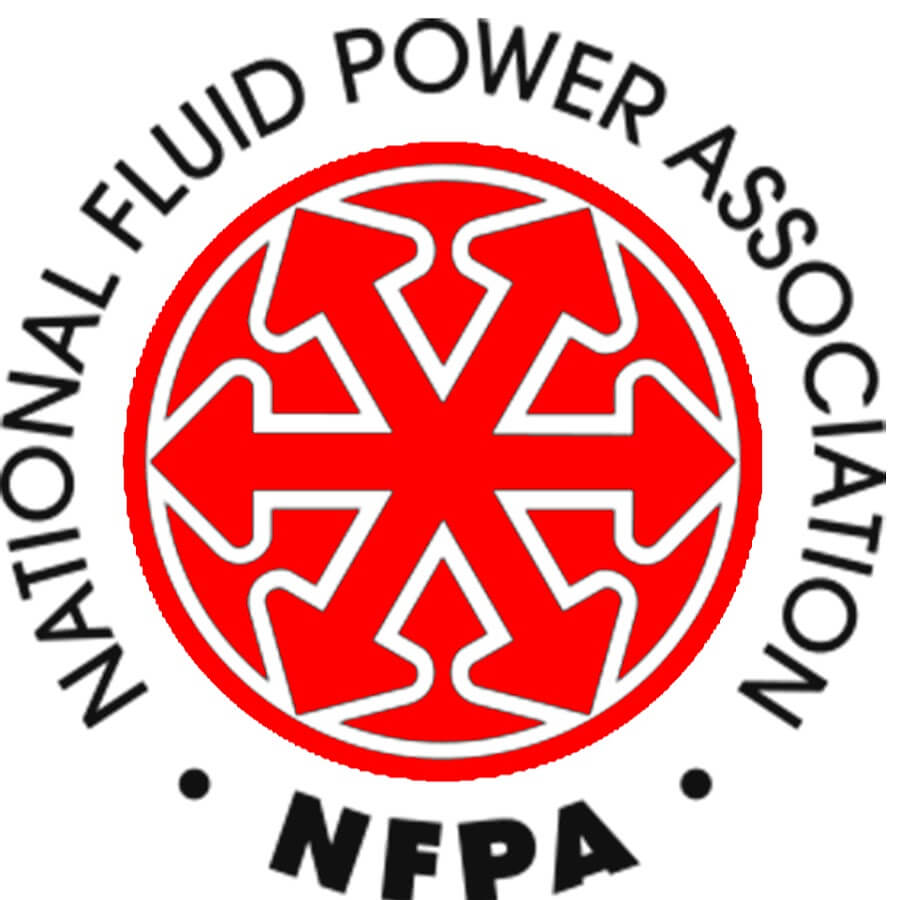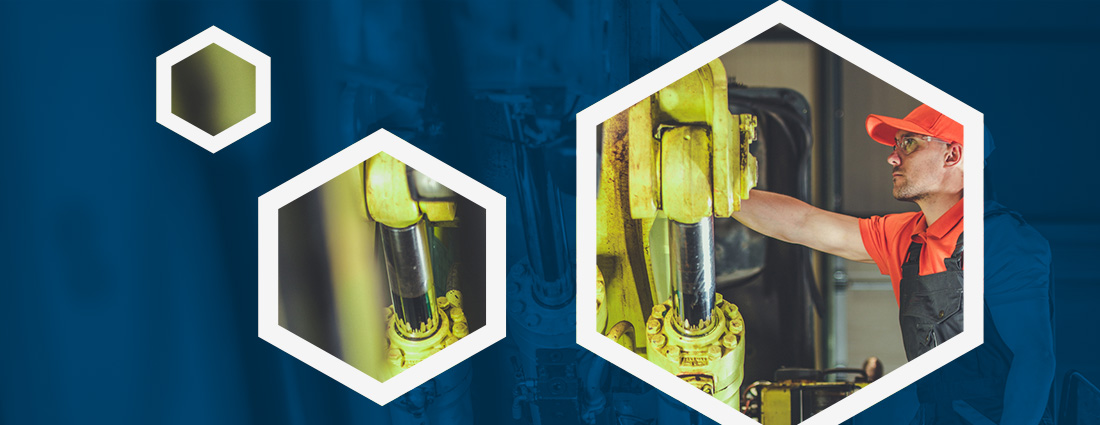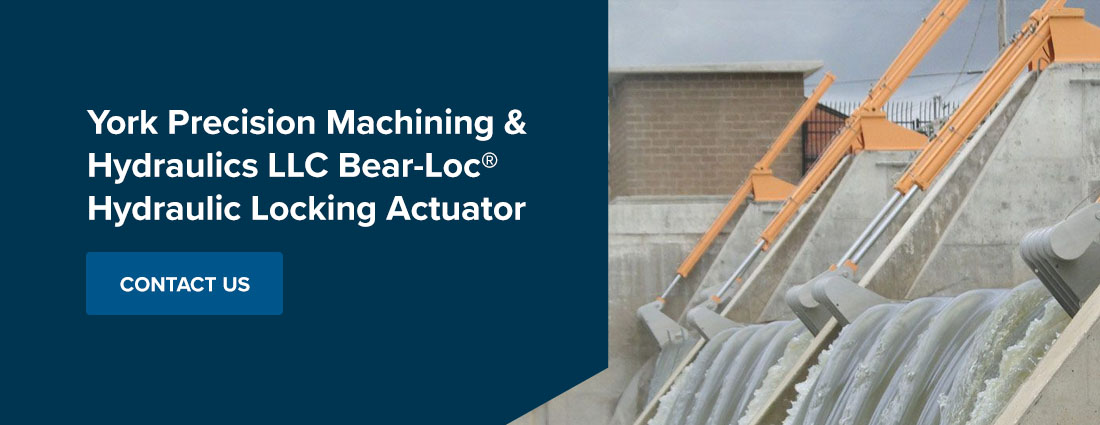When it comes to operating heavy machinery and equipment, a hydraulic system likely does the heavy lifting. These powerful pieces of equipment are capable of moving impressive weights and are behind some of the most vital tasks of many businesses. With all the work they do, proper hydraulic system care is critical. Without it, you risk damaging the components, losing efficiency and injuring workers by creating safety hazards.
Many machinery maintenance tasks need to be done regularly, so it helps to keep a list handy. We have compiled a hydraulic system maintenance checklist, so you can ensure your system stays clean and healthy.
Why Is Hydraulic System Maintenance Important?
A hydraulic system is a critical component of most heavy machinery. A hydraulic system's fluid power enables the force needed to lift and move heavy parts. Hydraulic systems themselves feature numerous intricate components that must operate efficiently for the system to function. Keeping each assembly in working order requires a regular maintenance routine.
Any machinery maintenance is critical for your operation's safety, compliance, efficiency, and cost savings. Regular hydraulic servicing will ensure the following:
Safety
Your employees are the heart and soul of your organization — ensuring their safety allows you to continue doing what you do. Working around hydraulic equipment is dangerous, especially when the equipment malfunctions or breaks down. Instituting a regular maintenance routine will help you notice and repair potentially hazardous issues to minimize the chances of a harmful incident occurring.
Hydraulic systems operate under high pressure, and a sudden failure can result in severe injuries. Adding a maintenance schedule mitigates these risks and helps ensure compliance with safety regulations, limiting legal liabilities. Well-maintained systems also operate more smoothly, which reduces strain on the operators.
Adequate training goes a long way in ensuring system maintenance and safety. Ensure that everyone who performs maintenance on the hydraulic system is competent and well-trained. Regular training updates also ensure technicians are up to date on the latest maintenance and safety practices.
Uptime
Time is money, so you do everything you can to keep your crew on schedule. Regular equipment maintenance is critical to workplace efficiency, as servicing your equipment will help prevent breakdowns and injuries that could halt your operations. Rather than falling behind due to unforeseen incidents, work regular maintenance into your schedule to maximize uptime.
The comparatively small amount of time you dedicate to hydraulic equipment maintenance will increase your organization's productivity in the long run. It allows you to identify potential problems early on, so you can schedule maintenance to minimize disruptions. You can also track maintenance data to identify patterns and trends that optimize your schedule and improve equipment reliability.
Savings
Your organization spent a lot of money purchasing hydraulic equipment, so preserving that investment through consistent maintenance is wise. A breakdown could cause you to spend even more money repairing or replacing those resources. Maintenance technicians clear the clogs and corrosion that could damage your system's critical components.
By investing a small amount in hydraulic servicing, you will save your business from the high costs of repairing components, replacing your entire system or covering employee medical bills. In addition, properly maintained equipment has a higher resale value, and demonstrating a maintenance commitment can lower your insurance premiums.
Hydraulic System Maintenance Checklist
Before starting on this checklist, you may want to have your system's literature with you, to check manufacturer specifications for things like filter schedules, oil specs, and average temperatures.
Here is our collection of hydraulic system maintenance tips:
1. Oil Maintenance
Check your hydraulic oil on a consistent schedule — it needs to remain clean and free of any contaminants. You should empty and replace the hydraulic oil per the manufacturer's instructions.
You can help minimize the risk of contamination by keeping the area around entry points, such as dipsticks, reservoir caps, breathers, and piston rods, clear of dust and debris.
Read the manufacturer specifications to confirm how often you should change the fluid and other factors of hydraulic fluid care. Using the same type of hydraulic fluid every time you top off your levels is essential. If possible, use the same brand each time as well.
2. Changing Filters Regularly
Filters take on the task of removing even the most minuscule particles that could clog your hydraulic system. However, your filters will lose efficiency as they accumulate pollutants, so replace them often. If applicable, make sure to clean the filter bowl as well.
3. Rod Conditions
Visually inspect the rod for wear, such as corrosion and pitting. These issues can lead to moisture within the fluid, which compounds and can cause many problems for your hydraulic system, like increased wear and inadequate lubrication.
4. Seal Replacement
If rod corrosion occurs, it can damage the seal from excess friction. Other dangers to seals include excess pressure and fluid contaminants. A worn seal may leak, causing equipment hazards and environmental health and safety concerns. If there are signs the seal is damaged, check with your equipment manufacturer about proper replacement.
5. Regular Hydraulic Lines Checkup

Fluctuations in pressure or line thickness can lead to equipment damage. For example, excessive pressure from the cylinder can cause ballooning, where the line dilates and allows too much high-pressure fluid to pass, thus wearing out the seals. Regularly inspect the lines' condition and ensure they are not ballooning.
6. Inspect Fluid Levels
You must watch your fluid levels for optimal functioning, adding to them as needed. Too little hydraulic fluid can damage your pumps. Just like when replacing contaminated oil, be sure to follow the specifications given by the manufacturer and take care to avoid mixing oils.
7. Check Breather Caps, Fill Screens, and Breather Filters
Breathers must be kept clean or risk contaminating the hydraulic system. Clean the breather regularly and inspect it for holes or tears. Different types of breathers may have additional requirements, so check the manufacturer's instructions. Spring types, for instance, may need to be replaced annually to avoid tension loss that allows contaminants. Others can have indicators that tell you when to replace filters or caps. Be aware of any additional steps such as these.
8. Inspect Filter Indicators
Most filters have pop-out buttons that trigger when they become clogged. Check for any of these indications and replace the filters as needed.
9. Visually Check All Pipes, Pipe Connections and System Hoses
If hoses are pinched, kinked, frayed, bubbling, stretched, or otherwise damaged, they can restrict the flow of fluid or lead to pressure leaks. Most of these problems are visible from the outside, but others occur internally, so inspect the inside for damage that could cause a clog.
Additionally, check pipes, fittings and couplers for any dents or corrosion. Fittings should be snug, but not overly tight. Couplers need to stay clean to prevent contamination or leaking.
Leaks cause excessive oil consumption, overheating and severe safety and environmental hazards. These can be difficult to clean up and dangerous for employees, so watch out for signs to prevent leaks in the first place.
10. Check the System Temperature
If your system temperature gets too hot, it could indicate an issue with your cooler or relief valve. Low fluid levels could also contribute to heat. Use built-in or infrared thermometers to check temperatures. Do not touch components that you suspect may be hot, as this can lead to severe burns.
11. Visually Inspect Inside the Reservoir
Aeration within the reservoir can cause overheating and wear on seals and system components. Aeration happens when air bubbles enter the oil stream due to low fluid levels, low fluid temperatures, air leaks and bad seals. Foaming, loud gurgling noises and whirlpools at the suction strainer indicate aeration.
12. Listen to the Pumps
Similar to aeration, cavitation is the result of gas bubbles experiencing rapid changes in pressure. The gas bubbles implode, causing miniature shock waves. The shock waves generate repeated stress on the metal surfaces, damaging the components.
If a pump is cavitating, it will release a high-pitched whining sound. Listening to the pumps gives you an idea of cavitation that may be present.
13. Evaluate a Sample of Hydraulic Fluid
To check your fluid for quality, take a small sample and inspect it. Do a quick visual inspection for color abnormalities and visible contaminants. You may also want to inspect for any unusual odors. Performing a contamination test can offer a more accurate review of the fluid's qualities. It offers detailed findings for particle contamination, water contamination, viscosity, acidity and signs of overheating.
14. Perform Hydraulic Valve Maintenance
Scan electrically controlled Servo valves using an infrared thermometer and check their temperature. If it is higher than 150℉, you may have a problem with the valve. Slow or errant operation at the valve points can be a sign of contaminated fluid.
15. Check the Electric Drive Motor
Keep your infrared thermometer out and use it on the electric drive motor to detect any areas of high heat. These areas could be on the housing or rotor bearings and require servicing to avoid further damage to the equipment.
16. Check and Adjust the System Pressure Settings
Verify whether the pressure relief valve is set correctly and functional. If it is, check the pressure settings on all the valves in the system with a calibrated pressure gauge for best results.
Troubleshooting a Hydraulic System
Despite your best preventive maintenance practices, you may still encounter challenges during your hydraulic system's operation. When they occur, the sooner you can diagnose the issue, the sooner you can get back on track. Common causes of hydraulic system failure can be challenging to diagnose. Consider the following common issues to troubleshoot the problem:
- Unpredictable system performance: If the hydraulic system does not run, runs at the wrong speed or performs unpredictably, there are several possible causes. Ensure you use the specified fluid amount, and check for oil leaks and line blockages. Secure all the fittings and allow the system ample time to warm up. Verify the pressure compensator settings, clean dirty filters and adjust the restrictors and relief valves as indicated in the operations manual.
- Subpar control valve performance: The control valve may bind, leak or drop load. Your first step is to replace any worn fittings and seals and confirm there is no leakage. Ascertain whether the valve is properly aligned and replace any cracked or damaged components.
- Foam or overheating oil: If the oil in the hydraulic system foams or overheats, check if it is clean and full. Check the reservoir size and make sure it is clean, then confirm the oil cooler is working correctly. Confirm the engine speed is within manufacturer limits and place the control valve in neutral when idle.
- Unreliable cylinder performance: Look for cylinder leaks, knocks or incorrect lowering. If you experience any of these symptoms, replace any rods or seals with noticeable wear. Ensure the load check is functional and check for air contamination in the fluids and lines.
- Loud noises from the system: In most cases, aeration and activation are the primary causes of unusual noise. Repair the inlet and ensure the intake line is still structurally sound. Check the reservoir oil level and replace any worn intake lines.
Hydraulic System Maintenance Tips
As with any maintenance task, it is important to approach it the right way. Here are some hydraulic system maintenance tips that can make the process easier and faster for your employees:
- Watch your access points and pressure readings: When setting up your system, place frequently accessed components, like filters and gauges, in easy-to-reach places.
- Label your reservoirs: To ensure accurate fluid changes, label the reservoirs. You can also mark normal fluid levels on the reservoir sight glass, to make this step faster and simpler.
- Consider automatic drain valves: Installing automatic drain valves may be worth it to eliminate certain maintenance tasks.
- Put safety first: Always remember how much power a hydraulic system is capable of. Only allow skilled, trained technicians to perform maintenance on them to avoid injury or damage.
York Precision Machining & Hydraulics LLC Bear-Loc® Hydraulic Locking Actuator
York Precision Machining & Hydraulics is leading the way in precision fluid power components and systems. We are home to the renowned Bear-Loc® and Bear-Loc® Hydraulic Locking Actuator, the most reliable locking solution available. More information about Bear-Loc® and York Precision Machining & Hydraulics products and capabilities is available here.
Proper hydraulic maintenance and a quality hydraulic locking actuator can help protect your system's longevity and your employees' safety. For more information about hydraulic systems and how Bear-Loc® can improve yours, reach out to a representative today.
Awards & Certifications

ITAR Registered #M39417

Outstanding Performance

Excellence Presented By Commander

SIBC Member

ACIBC Member

NFPA Member





